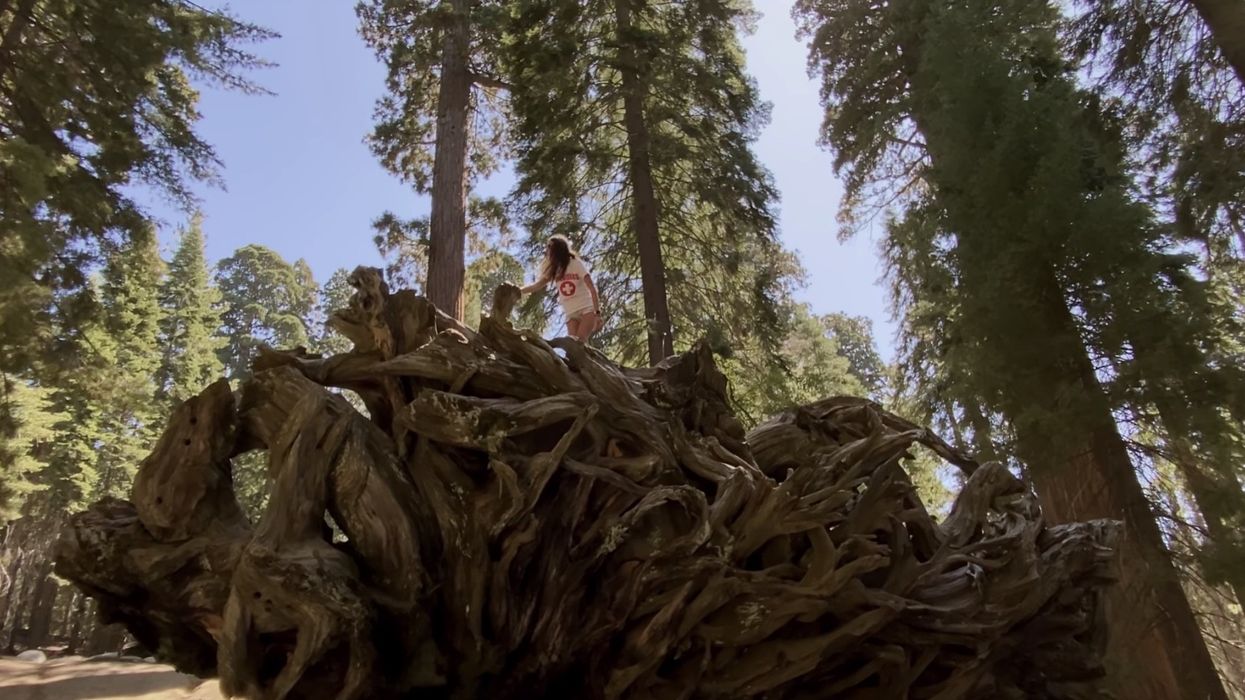How I Made This iPhone 11 Pro Footage Look So Damn Good
Last weekend, I took my iPhone 11 Pro Max for a test in Sequoia National Park.

I decided to mainly test the ultra-wide-angle camera and there's no better subject to film than the park's huge trees. In terms of camera, we need to separate photos from videos.
The 11 Pro is a huge update compared to the previous model. Photos look better, night mode is insane, portrait mode is improved and the wide-angle camera really makes a big difference when you are trying to capture landscape or architecture.
In terms of videos, there is a slight improvement when it comes to noise (on the wide and telephoto lens) and mainly bug fixes from the previous model. For example, the extended dynamic range was working very poorly for me on the iPhone X/XR/Xs; the skin tones used to look very weird and when I was filming sunset/sunrise there was something off in the way the iPhone was managing the highlights. Now that that is fixed, the image looks much more natural. The stabilization is absolutely incredible and I think we are near a point where you don’t need a gimbal anymore, period.
I’ve never seen anything like that and even on the ultra-wide-angle camera (which doesn’t have optical IS) the software does an amazing job in stabilizing the footage.
I actually brought my tripod and slider with me, but I never used them since I was able to do all my camera movements handheld. Now, let’s talk about that ultra-wide-angle camera because this is the main difference from any other iPhone.
The ultra-wide-angle camera is not sharp at all. And this is why I love it so much! We've reached a point where sensors are so good that the image is usually extra sharp and crisp, especially when we film in 4K. This happens not just on smartphones, but on any other cameras. It's also why cinematographers use diffusion filters so much: To smooth out the highlights, decrease the contrast and to make the image less sharp and more organic.
I used the ultra-wide-angle lens for the vast majority of the time because it almost seems to have a diffusion filter in front of the lens. The other two cameras, on the other hand, are incredibly sharp. But the ultra-wide-angle lens has way more noise with low light and interiors and thus I wouldn't recommend it in those situations.
I absolutely love it, though, and it opens up tons of opportunity for creators since you can literally capture everything with that 13mm focal length.
iPhones are always ahead of the competition when it comes to video and this iPhone 11 Pro is just another great iPhone that captures amazing cinematic visuals. The real deal here is the Filmic Pro App and I think the new version is gonna be incredible, especially because users will be able to record footage from multiple cameras at the same time. I will definitely shoot another test once the app is gonna be ready!
For this video, I wanted to test the camera as it is. What you see in this test was filmed on the iPhone 11 Pro Max, the original camera app, and a Shoulderpod for a better grip -- nothing else. (Filmic Pro was not working properly, but they are releasing a compatibility software update.)
Everything was shot in 4K 60p and conformed at 24p. The video was edited and graded in DaVinci Resolve 16. For the grade, I used our brand new BUTTERY LUTs for iPhone that we just released today (https://www.butteryfilms.com/luts). The package includes our super popular Natural Rec709 and four creative LUTs to stylize your footage. They are fully compatible with Luma Touch; you can grade your footage on the go either on your iPhone or iPad.
Speaking of Luma Touch, the only reason why I didn’t do everything on my tablet is that I could not see the external SSD in the app and I didn’t have time to transfer everything to my camera roll. My guess/hope is that Luma Fusion will release an update that will allow us to import the files directly from an external SSD and that will be revolutionary! I hope you will enjoy the video and if you have any questions just leave a comment below.
Here are some of my favorite accessories for smartphone filmmaking: Polar Pro NDs, Shoulderpod, Shure Mic.
Thanks for watching!
This post was written by Director/Cinematographer Matteo Bertoli















